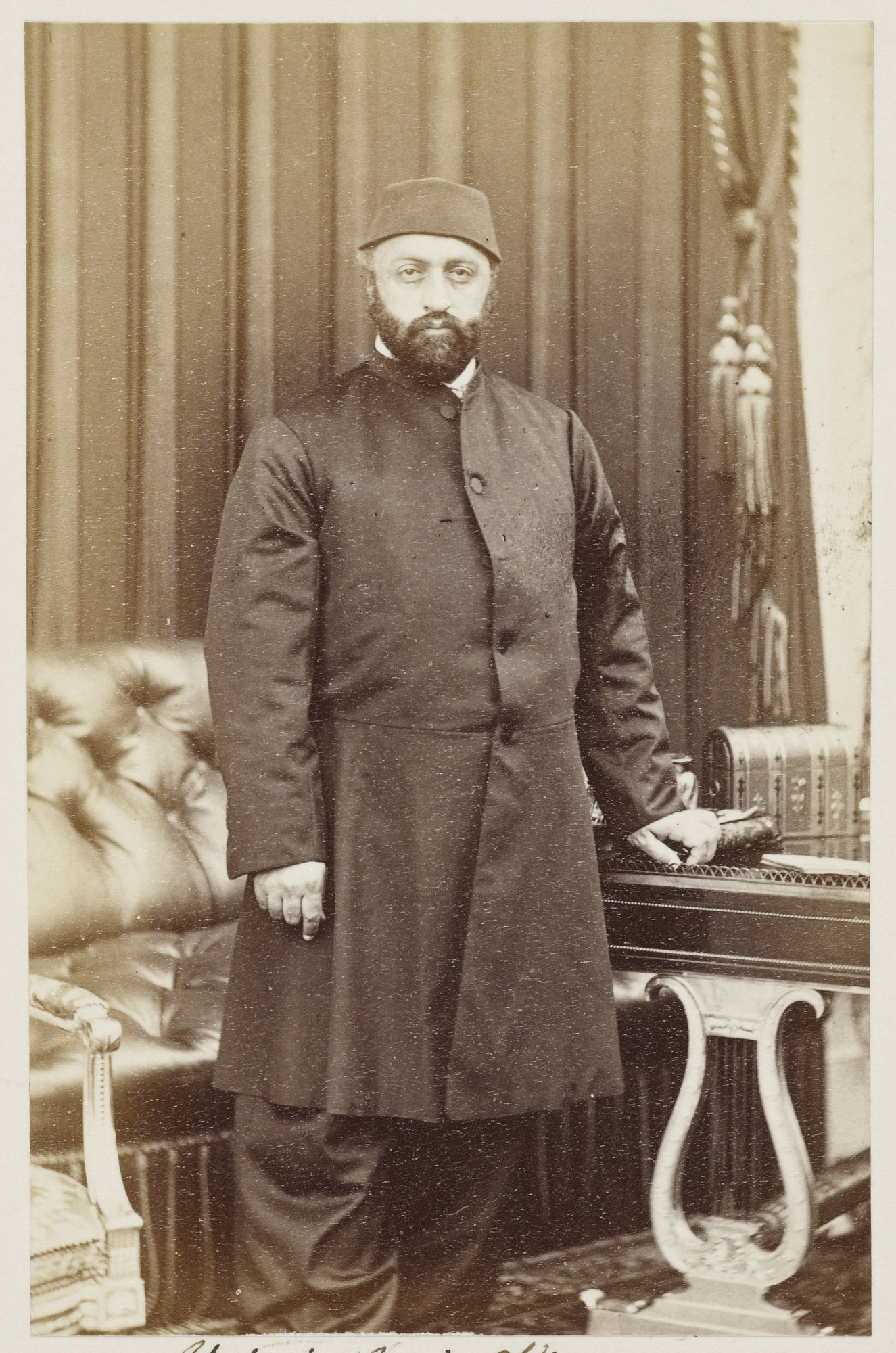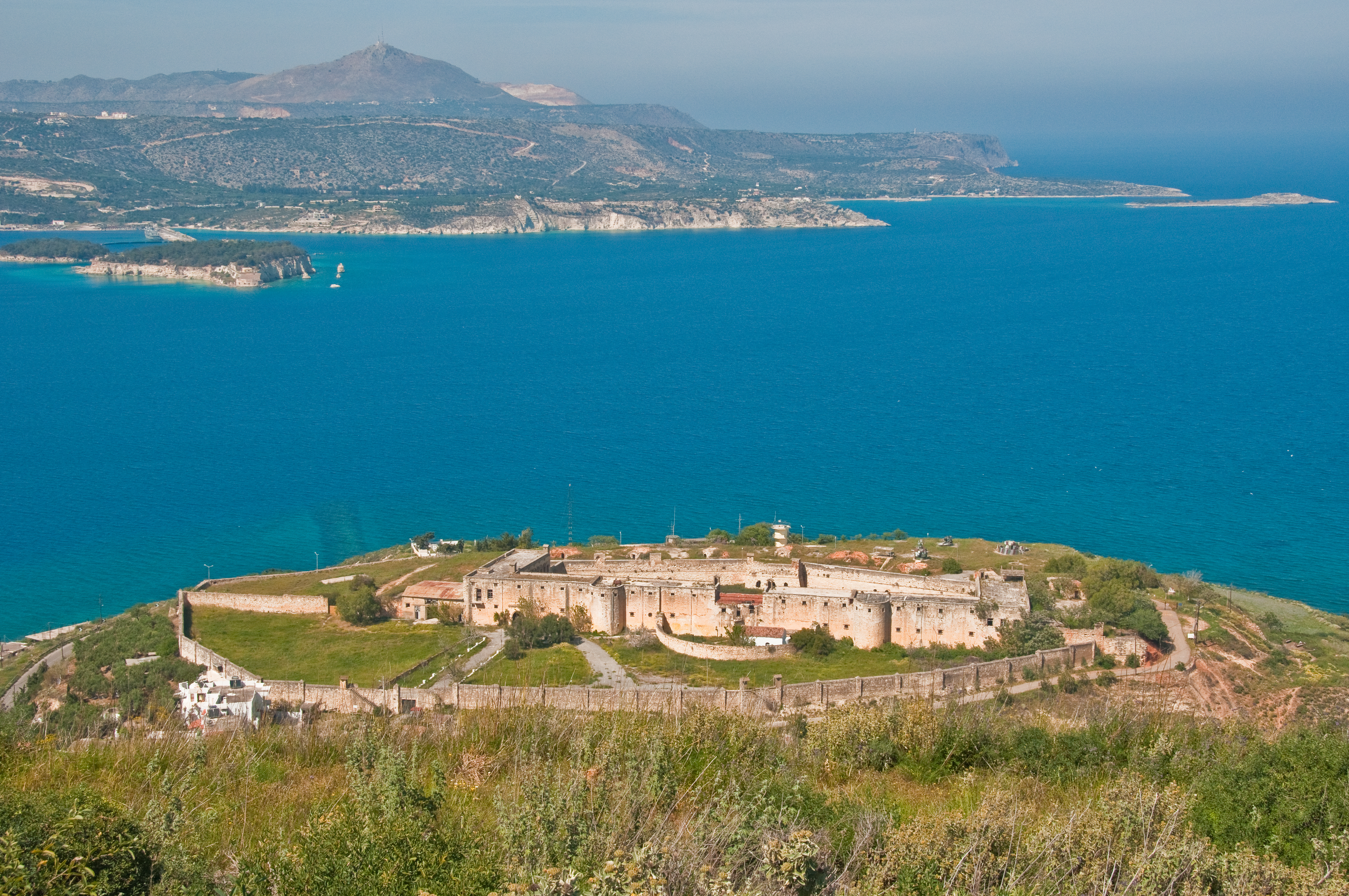|
Souda Bay
Souda Bay () is a bay and natural harbour near the town of Souda on the northwest coast of the Greek island of Crete. The bay is about 15 km long and only two to four km wide, and a deep natural harbour. It is formed between the Akrotiri peninsula and Cape Drapano, and runs west to east. The bay is overlooked on both sides by hills, with a relatively low and narrow isthmus in the west near Chania. Near the mouth of Souda bay, between the Akrotiri and the town of Kalives, there is a group of small islands with Venetian fortifications. The largest island is Souda Island, giving its name to the bay. Souda Bay is now a popular tourist destination although there are no formal public beaches designed in the area, due to the presence of the Crete Naval Base, a major naval installation of the Hellenic Navy and NATO in the eastern Mediterranean. Villages such as Megala Chorafia and Kalives afford fine views of the bay, and house-building, particularly for foreigners and tou ... [...More Info...] [...Related Items...] OR: [Wikipedia] [Google] [Baidu] |
Souda Bay Inlet
Souda () is a town and former municipality in the Chania (regional unit), Chania regional unit, Crete, Greece. Since the 2011 local government reform it is part of the municipality Chania, of which it is a municipal unit. The municipal unit has an area of . It is an important ferry and naval port at the head of Souda Bay. Souda is to the east of central Chania, although the area in between is mostly built-up. The town is a relatively new settlement, built on what used to be salt beds and marshland. The Turkey, Turks knew the area as 'Tuzla', their name for salt-beds. In the 1870s, they began to build a new settlement here which grew as the port expanded. Souda Bay is one of the deepest natural harbours in the Mediterranean and is easy to defend. Now Souda is the arrival point for ferries from Piraeus. There is also a Souda Bay Naval Base, naval base located in Souda and across the bay, for NATO, with military accommodation and hospital in the town. Much of the command, particular ... [...More Info...] [...Related Items...] OR: [Wikipedia] [Google] [Baidu] |
World War II
World War II or the Second World War (1 September 1939 – 2 September 1945) was a World war, global conflict between two coalitions: the Allies of World War II, Allies and the Axis powers. World War II by country, Nearly all of the world's countries participated, with many nations mobilising all resources in pursuit of total war. Tanks in World War II, Tanks and Air warfare of World War II, aircraft played major roles, enabling the strategic bombing of cities and delivery of the Atomic bombings of Hiroshima and Nagasaki, first and only nuclear weapons ever used in war. World War II is the List of wars by death toll, deadliest conflict in history, causing World War II casualties, the death of 70 to 85 million people, more than half of whom were civilians. Millions died in genocides, including the Holocaust, and by massacres, starvation, and disease. After the Allied victory, Allied-occupied Germany, Germany, Allied-occupied Austria, Austria, Occupation of Japan, Japan, a ... [...More Info...] [...Related Items...] OR: [Wikipedia] [Google] [Baidu] |
Souda Bay
Souda Bay () is a bay and natural harbour near the town of Souda on the northwest coast of the Greek island of Crete. The bay is about 15 km long and only two to four km wide, and a deep natural harbour. It is formed between the Akrotiri peninsula and Cape Drapano, and runs west to east. The bay is overlooked on both sides by hills, with a relatively low and narrow isthmus in the west near Chania. Near the mouth of Souda bay, between the Akrotiri and the town of Kalives, there is a group of small islands with Venetian fortifications. The largest island is Souda Island, giving its name to the bay. Souda Bay is now a popular tourist destination although there are no formal public beaches designed in the area, due to the presence of the Crete Naval Base, a major naval installation of the Hellenic Navy and NATO in the eastern Mediterranean. Villages such as Megala Chorafia and Kalives afford fine views of the bay, and house-building, particularly for foreigners and tou ... [...More Info...] [...Related Items...] OR: [Wikipedia] [Google] [Baidu] |
5th Infantry Division (Greece)
In military terms, 5th Division may refer to: Infantry divisions *5th Division (Australia) * 5th Division (People's Republic of China) * 5th Division (Colombia) * Finnish 5th Division (Continuation War) * 5th Light Cavalry Division (France) * 5th Motorized Division (France) * 5th North African Infantry Division, France *5th Division (German Empire) * 5th Division (Reichswehr) * 5th Jäger Division (Wehrmacht) *5th Royal Bavarian Division, German Empire *5th Mountain Division (Wehrmacht) * 5th Infantry Division (Greece) *5th Division (Imperial Japanese Army) * 5th (Mhow) Division, British Indian Army *5th Infantry Division (India) * 5th Alpine Division Pusteria, Italy * 5th Infantry Division Cosseria, Italy * 5th Division (New Zealand) * 5th Division (North Korea) * 5th Division (Iraq) * 5th Division (Norway), participated in the Norwegian Campaign * 5th Infantry Division (Ottoman Empire) *5th Infantry Division (Philippines) * 5th Infantry Division (Poland) * 5th Rifle Division (Po ... [...More Info...] [...Related Items...] OR: [Wikipedia] [Google] [Baidu] |
SS Minnewaska (1909)
SS ''Minnewaska'' was a British ocean liner that was one of the ships that assisted with sending out survivors names following the 1912 disaster. In 1916, she hit a mine laid by in the Mediterranean Sea southeast of Dentero Point, Suda Bay, Crete, while she was travelling from Alexandria, Egypt to Saloniki with 1,600 troops. Construction ''Minnewaska'' was constructed in 1908 at the Harland & Wolff shipyard in Belfast, United Kingdom. She was launched on 12 November 1908 and completed in 1909. The ship was long, with a beam of and a depth of . The ship was assessed at . She had 2 quadruple expansion engines driving two screw propellers and the engine was rated at 1,222 nhp. She had six sister ships: * * * * * * Accidents In her career as an ocean liner and transport ship, ''Minnewaska'' had a few accidents. In late April 1911, 19-year-old seaman J. W. Browning fell overboard when his lifeline broke while he was working on the lifeboats. According to th ... [...More Info...] [...Related Items...] OR: [Wikipedia] [Google] [Baidu] |
Cretan State
The Cretan State (; ) was an autonomous state governing the island of Crete from 1898 to 1913, under ''de jure'' suzerainty of the Ottoman Empire but with ''de facto'' independence secured by European Great Powers. In 1897, the Cretan Revolt (1897–1898), Cretan Revolt led the Ottoman Empire to Greco-Turkish War (1897), declare war on Kingdom of Greece, Greece, which led the United Kingdom of Great Britain and Ireland, United Kingdom, French Third Republic, France, Kingdom of Italy, Italy and Russian Empire, Russia to intervene on the grounds that the Ottoman Empire could no longer maintain control. The Cretan State was the prelude to the island's final annexation to the Kingdom of Greece, which occurred ''de facto'' in 1908 and ''de jure'' in 1913 after the First Balkan War. History Background The island of Crete, an Ottoman possession since the end of the Cretan War (1645–1669), was inhabited by a mostly Greek-speaking population, whose majority was Christian. During and a ... [...More Info...] [...Related Items...] OR: [Wikipedia] [Google] [Baidu] |
Prince George Of Greece And Denmark Arriving At Suda Bay
A prince is a male ruler (ranked below a king, grand prince, and grand duke) or a male member of a monarch's or former monarch's family. ''Prince'' is also a title of nobility (often highest), often hereditary, in some European states. The female equivalent is a princess. The English word derives, via the French word ''prince'', from the Latin noun , from (first) and (head), meaning "the first, foremost, the chief, most distinguished, noble ruler, prince". In a related sense, now not commonly used, all more or less sovereign rulers over a state, including kings, were "princes" in the language of international politics. They normally had another title, for example king or duke. Many of these were Princes of the Holy Roman Empire. Historical background The Latin word (older Latin *prīsmo-kaps, ), became the usual title of the informal leader of the Roman senate some centuries before the transition to empire, the ''princeps senatus''. Emperor Augustus established the forma ... [...More Info...] [...Related Items...] OR: [Wikipedia] [Google] [Baidu] |
Abdulaziz
Abdulaziz (; ; 8 February 18304 June 1876) was the sultan of the Ottoman Empire from 25 June 1861 to 30 May 1876, when he was overthrown in a government coup. He was a son of Sultan Mahmud II and succeeded his brother Abdulmejid I in 1861. Abdulaziz's reign began during the Ottoman Empire's resurgence following the Crimean War and two decades of the Tanzimat reforms, though it was still reliant on European capital. The decade after his accession was dominated by the duo of Fuad Pasha and Aali Pasha, who accelerated reorganization of the Empire. The Vilayet Law was promulgated, Western codes were applied to more aspects of Ottoman law, and the millets were restructured. The issue of Tanzimat dualism continued to plague the empire, however. He was the first Ottoman sultan who traveled to Western Europe in a diplomatic capacity, visiting a number of important European capitals including Paris, London, and Vienna in the summer of 1867. With Fuad and Aali dead by 1871, Abdul Az ... [...More Info...] [...Related Items...] OR: [Wikipedia] [Google] [Baidu] |
Izzeddin Fortress
The Izzeddin Fortress (; ''Izzeddin'' means "Glory of the Faith") is an Ottoman fortress in Souda Bay, Crete, near the village of Kalami, best known for its role as a prison for political prisoners in 20th-century Greece. The fortress was established by the then Ottoman governor of the island, Rauf Pasha, in 1872, and named after the son of Sultan Abdulaziz. Already under the Cretan State (1898–1913) it was used as a prison, and continued so when Crete passed under Greek rule, until 1950. It was particularly notorious as a site of imprisonment for political prisoners, especially during the dictatorship of Theodoros Pangalos (1925–26) and the Greek Civil War. Its occupants included Eleftherios Venizelos in 1903 and the deposed dictator Theodoros Pangalos in 1926–28. After 1950 it passed under the jurisdiction of the Hellenic Navy The Hellenic Navy (HN; , abbreviated ΠΝ) is the Navy, naval force of Greece, part of the Hellenic Armed Forces. The modern Greek navy histo ... [...More Info...] [...Related Items...] OR: [Wikipedia] [Google] [Baidu] |
Aptera Fortress
Aptera may refer to: Biology * ''Aptera'' (cockroach), a genus of cockroaches in the family Blaberidae * ''Apteromantis aptera'', a species of praying mantis, endemic to the Iberian Peninsula * '' Hopea aptera'', a species of plant in the family Dipterocarpaceae, endemic to Papua New Guinea * '' Inga aptera'', a species of legume in the family Fabaceae, found only in Brazil * '' Parashorea aptera'', a species of plant in the family Dipterocarpaceae, endemic to Indonesia Other uses * Aptera (Greece), the city in Crete * Aptera (Lycia), an ancient city in Lycia, now Turkey * Aptera Motors, an American high-efficiency vehicle company ** Aptera (solar electric vehicle), a solar powered three wheeler from Aptera Motors announced in 2019 See also * Aptera in the 10th edition of ''Systema Naturae'' * Apterygota The name Apterygota is sometimes applied to a former Subclass (biology), subclass of small, agile insects, distinguished from other insects by their lack of wings in the pres ... [...More Info...] [...Related Items...] OR: [Wikipedia] [Google] [Baidu] |




